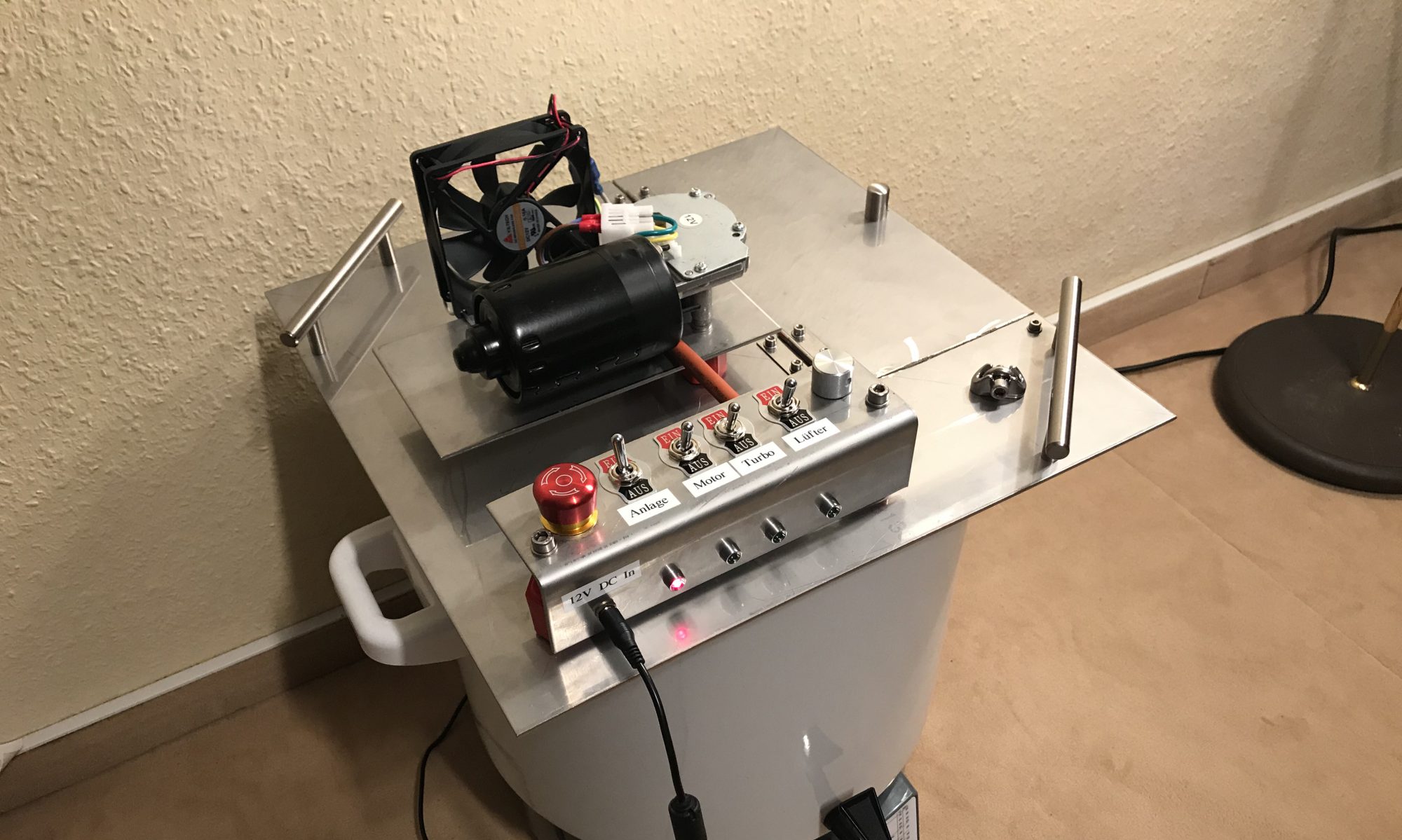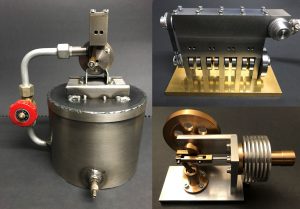Brewing process with the 20 liter brewing system:
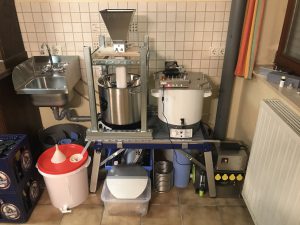
- First, the mash pan (2nd level on the right) is filled with the mash water and the water is heated according to the recipe.
- While the mash water is heated to the necessary temperature, the malt is crushed using a malt mill with a suitable attachment for the carriage.
- As soon as the required temperature of the mash water has been reached, the freshly crushed malt is mashed in and then the mashing process is started.
- During the mashing process, the mash is prevented from burning by the agitator (“Rührteufel” – top right on the mash pan), the resting stages are monitored via the external temperature control (“Malzflüsterer” – bottom right next to the brewing rack).
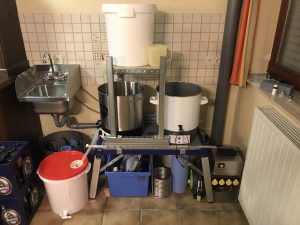
- After mashing, it is mashed into the lauter tun (3rd level) by manual decanting from the mash pan.
- While the lauter rest, the mash pan is roughly cleaned, filled with the necessary amount of sparge water and then heated to the correct temperature.
- Parallel to the heating of the sparge water, after the lautering rest has ended, the hop pan (2nd level on the left) is filled and, after the mash water is finished, the heated sparge water is carefully introduced into the lauter tun. A funnel interrupts the liquid column.
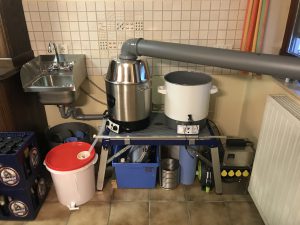 Then the hops are boiled in the wort pan (2nd level on the left). In order to avoid condensation in closed rooms, a vapor hood with a suitable steam exhaust pipe is attached to the wort kettle for cooking hops.
Then the hops are boiled in the wort pan (2nd level on the left). In order to avoid condensation in closed rooms, a vapor hood with a suitable steam exhaust pipe is attached to the wort kettle for cooking hops.
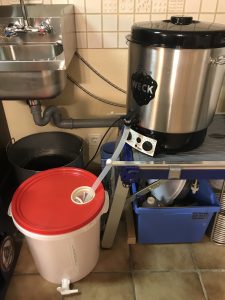
- When the hops are boiled, the wort is drained from the wort kettle from level 2 into the fermentation tank on level 1 (on the bottom left) through a monofilament filter bag with 150µ.
- After the wort has cooled down using a wort cooler, a sufficient amount of feed for the secondary fermentation is branched off and the original wort is determined with a refractometer.
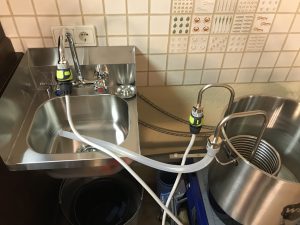 As an alternative to cooling the already filtered wort in the fermentation tank, it is possible to cool in the wort kettle immediately after the hops have been boiled in order to at least partially retain the cold lees during filtering.
As an alternative to cooling the already filtered wort in the fermentation tank, it is possible to cool in the wort kettle immediately after the hops have been boiled in order to at least partially retain the cold lees during filtering.
- Now the yeast comes into the wort, which then remains in the fermentation tank until complete fermentation.
- After complete fermentation, bottling is carried out using a filling tube.
- Before bottling, the required (i.e. calculated) amount of the previously branched feed for the secondary fermentation is added to the bottle.
- Now store for 6 to 8 weeks under the right conditions and then: PROST!
